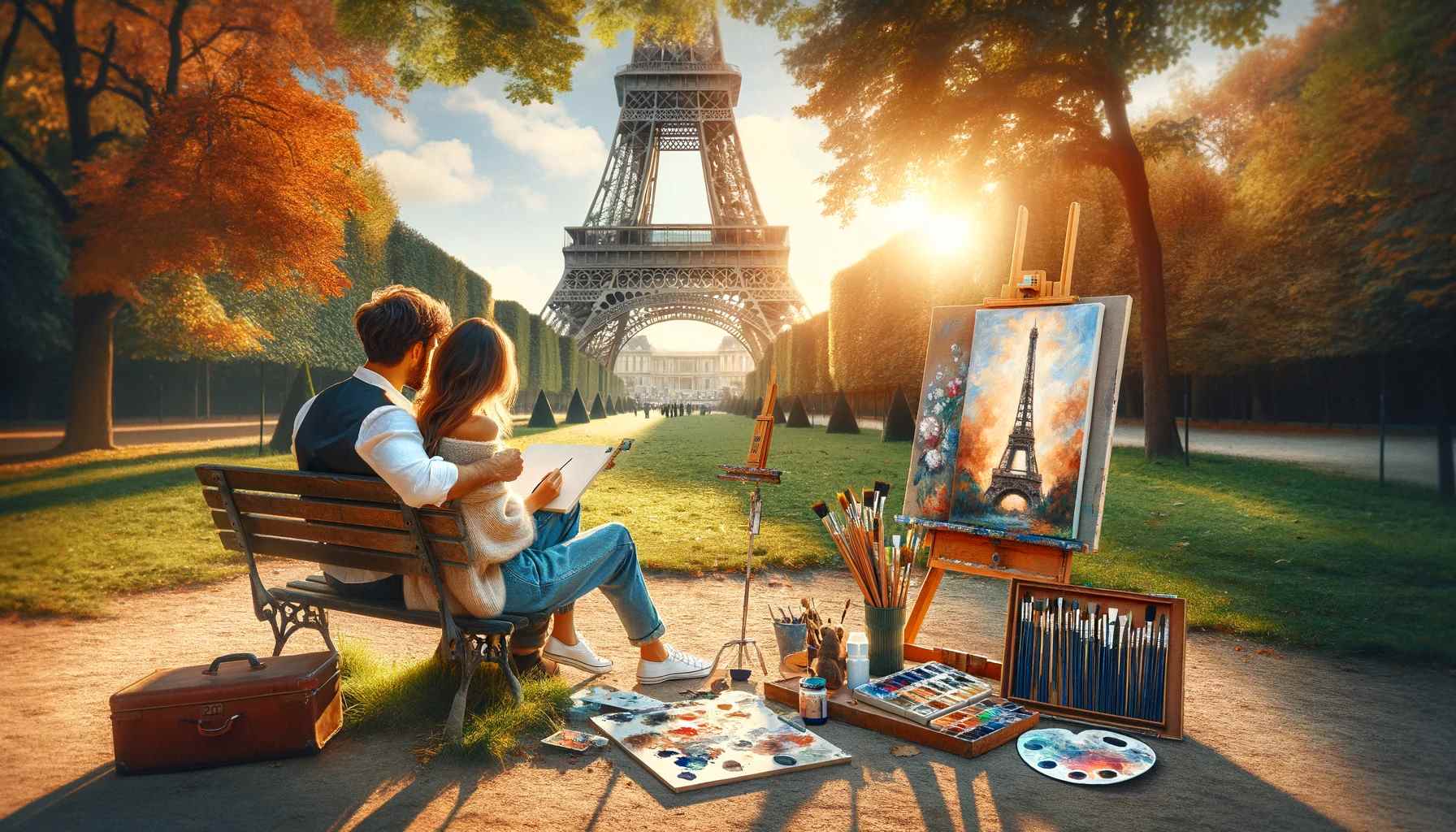This post contains affiliate links.
Creating a artist’s travel kit for the artistically inclined is more than just a matter of convenience; it’s about ensuring that inspiration and creativity are never hindered by the lack of tools, no matter where you find yourself. Whether you’re a seasoned artist taking your craft on the road or a beginner eager to capture the world through your unique perspective, having a well-prepared artist’s travel kit is indispensable. This article will guide you through curating your first artist’s travel kit, focusing on essentials that cater to beginners while leaving room for personalized additions as your art journey evolves.
Understanding the Basics of an Artist’s Travel Kit
An artist’s travel kit is a portable collection of art supplies, tailored to your specific medium, that enables you to create art wherever you go. The goal is to keep it lightweight and compact, ensuring it’s easy to carry, but comprehensive enough to allow you to seize creative opportunities as they arise.

Read our review on Art Kits
Essential Components of Your Kit

- Choosing the Right Bag or Case: Your kit’s home is as crucial as its contents. Opt for something durable, water-resistant, and easy to carry. A bag with compartments helps organize supplies, but ensure it’s compact enough to fit in a daypack.
- Sketchbook or Journal: A high-quality sketchbook is your canvas on the go. Choose one with sturdy, acid-free pages that can handle various mediums. Portability is key, so consider something in the A5 size range.
- Drawing Tools: A selection of pencils (HB, 2B, and 6B), a sharpener, and an eraser form the backbone of your drawing tools. For versatility, include a fine-line black pen for inking and detailing.
- Basic Painting Supplies: If you’re inclined towards painting, watercolors are an excellent start due to their portability. A compact watercolor set, a water brush (a brush with a built-in water reservoir), and a small palette will suffice.
- Additional Tools: Include a small ruler, a few paper clips (to hold your paper steady), and a small cloth for cleaning. These extras don’t take up much space but are incredibly handy.
- Personalization: Depending on your preferred medium, you might want to include additional items like charcoal sticks, a small set of acrylic paints, or markers. The key is to balance between variety and the weight of your kit.
Tips for Assembling Your Kit

- Prioritize Quality Over Quantity: Especially for beginners, it’s tempting to fill your kit with every tool imaginable. Focus on quality essentials that serve multiple purposes, rather than an abundance of single-use items. artist’s travel kit
- Test Your Kit: Before embarking on your travels, take your kit for a test run. Spend a day in your local park or cityscape and use only the tools in your kit. This experience will highlight any missing essentials or unnecessary items.
- Consider Your Destination: Tailor your kit based on your travel destination. If you’re heading to a coastal area, for instance, include colors or tools that best capture water and sky.
- Storage and Care: Learn the best way to store your supplies, especially paints and brushes, to extend their life and maintain their quality. Keeping your brushes clean and dry, for example, is crucial.
Maximizing the Use of Your Travel Kit

- Embrace Spontaneity: The beauty of having a artist’s travel kit is the freedom it affords you to create whenever and wherever inspiration strikes. Use downtime, like waiting at a cafe or airport, as opportunities to sketch or paint.
- Capture Moments, Not Masterpieces: Focus on capturing the essence of your experiences rather than creating perfect art pieces. These creations are personal memories of your travels, filled with your unique perspective and growth as an artist.
- Engage with Local Artists: If possible, connect with local artists or join art classes during your travels. This engagement enriches your experience and provides unique insights and techniques that you can incorporate into your art.
- Reflect and Revise: After your travels, reflect on the use of your artist’s travel kit. Identify which tools were indispensable and which ones remained unused. This reflection will help you optimize your kit for future trips.
Conclusion
Assembling your first artist’s travel kit is a journey in itself, one that reflects your commitment to nurturing your creativity no matter where life takes you. While the essentials listed here provide a solid foundation, remember that the most important aspect of your travel kit is how it aligns with your artistic vision and needs. As you grow as an artist, your kit will evolve too, becoming a trusted companion on your creative journey.
In embracing the spontaneity and inspiration that travel brings, your artist’s travel kit not only becomes a vessel for your tools but a repository for your experiences, growth, and the beautiful unpredictability of creative expression.

Article from Take Me Fishing Travel
This post contains affiliate links.


[…] A great Article from Artist Corner: Making a Artist travel kit: A journey in itself […]